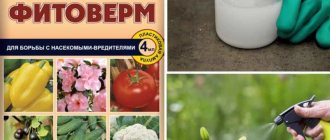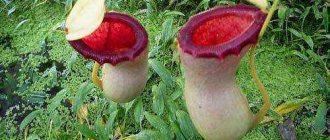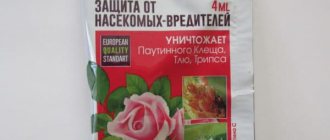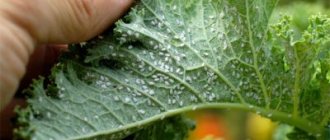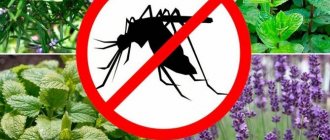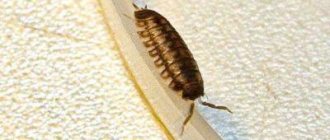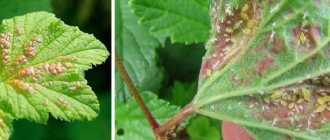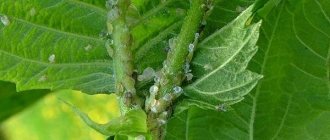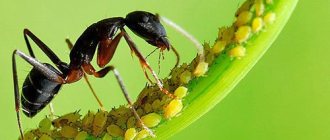Plants are a diverse kingdom of living organisms, differing not only in appearance, developmental characteristics, but also in the type of nutrition. In botany, there is a separate group of carnivorous plants that feed on insects, mollusks and even small mammals to obtain the necessary nutrients.
In most cases, these are rare and endangered exotic representatives that are gaining popularity as house flowers. In this article we will look at the most interesting varieties of carnivorous plants.
Insectivores
These predatory plants feed exclusively on arthropods; when meat or shellfish are ingested, an active process of rotting begins. For this purpose, they use a variety of traps, in which a special enzyme is abundantly released, attracting and digesting prey. The largest group of carnivorous plants, some of which grow in Russia.
Sundew
A large genus of carnivorous plants, numbering more than 190 species. They live on almost all continents, preferring swampy and poor soils. In one place, sundews can live for more than 50 years, forming basal or vertical rosettes with an attractive appearance. It is actively cultivated as a home potted flower, which is distinguished by its whimsical care and cultivation.
The trap of all sundews is represented by moving tentacles, the small hairs of which are abundantly moistened with a sticky enzyme - this is what attracts small insects (see photo). As soon as the prey lands on the plant, the edges of the leaves begin to curl, wrapping around it. On average, digestion lasts 1-2 days, after which the trap opens again.
Zhiryanka
A genus of perennial insectivorous plants, found in non-tropical regions of the Northern Hemisphere and Asia. More than 80 species have been described, some of which are on the verge of extinction. It has large leaves of bright green or pink color, abundantly covered with a layer of sticky fat. The plant produces two types of cells responsible for the process of producing an enzyme for processing the victim and secreting mucus.
The butterwort feeds exclusively on small insects, less often on arachnids. Most species enter a dormant stage in winter, when hunting stops completely. The leaves look extremely decorative, which is why the plant is widely grown today as an exotic potted flower.
Sarracenia
This flower grows wild in North America and Canada. Prefers moist, marshy soils and often grows near bodies of water. The plant received its name in honor of the Canadian biologist M. Sarrazin; today more than 500 species have been described.
The trap is represented by funnel-shaped leaves in the shape of a red-green water lily. There is a small hood on top that protects the flower from rainwater getting inside. The trap produces a secretion that emits an odor that attracts small insects. After entering the water lily, the victim is digested within several days.
Venus flytrap
The most famous carnivorous plant, actively used as a decorative house flower. In its natural environment, it is found in marshy areas of the United States, where it is considered an endangered species. The Venus flytrap was described by Charles Darwin, who was surprised by the speed of the trap - it is only 0.1-0.3 seconds. It is she who is most often depicted in pictures in textbooks and manuals in the section devoted to carnivorous plants.
The leaves form two large lobes, inside colored red or green depending on the variety. Along the edges of the trap there are small processes that secrete mucus - it is this that attracts small insects and spiders. Inside it there are very sensitive villi, which give a signal for the leaf plate to slam shut when the victim gets inside. One trap can eat up to 3-4 insects, after which it dies.
Cephalotus saccularis
A small genus of evergreen insectivorous plants. It is found only in Australia and Albania, where it is under state protection. In the reports of biologists, the beginning of the life of this flower dates back to the Stone Age. It is rarely used as an ornamental potted plant due to the difficulty of care.
Cephalotus is a small flower, reaching a height of only 5 cm. The trap is represented by a soft water lily, the jagged edges of which are very decorative. They develop only in summer; throughout the rest of the year, traditional flat leaf blades are formed.
The top of the water lily is covered with a small lid, which constantly protects the trap from water and dew. It mainly feeds on small flying insects; digestion takes several days.
Water
They grow exclusively in bodies of water, where they feed on flying and excreting insects, as well as small crustaceans. As ornamental plants, they can only be found in specialized gardens, since it is extremely difficult to maintain optimal conditions.
Pemphigus
A numerous genus of carnivorous insects, more than 220 species have been described. They are found in fresh water bodies on almost all continents except Antarctica. Unlike other predatory flowers, bladderwort is characterized by rapid growth and development. It has the fastest trap among all carnivorous representatives of the flora.
The only insectivorous plant that uses a bubble trap. The principle of its operation is based on the difference in pressure with the environment. When a victim is nearby, the bubble sucks it in in a split second, closing the natural valve.
In most types of bladderwort, the trap is very shallow, where only the simplest microorganisms fall. Some species can also catch larger prey - tadpoles, water fleas.
Aldrovanda vesiculata
A monotypic genus of insectivorous plants of the Sundew family, lives only in fresh water bodies. The flower received its name in honor of the Italian Renaissance scientist. Found in lakes and rivers of Western Europe, Africa, Asia and Australia. Some researchers classify aldrovanda as a fossil plant species.
Outwardly, it is an inconspicuous perennial that is almost completely submerged in water. There are no roots, so the plant can move freely around the pond. Aldrovanda uses thread-like leaves as traps, reaching only 3 mm in length; the stems grow up to 11 cm.
They are characterized by a rapid growth rate, new dark green curls are formed every day. At the ends of the leaves there are sensitive bristles that respond to small aquatic larvae and crustaceans. When irritated, the leaves fold lengthwise, trapping the victim.
Darlingtonia californica
A predatory plant of the Sarracenia family, it grows wild in swamps and springs in northern California and Oregon. Named after an American doctor. It is protected by the state; today it is on the verge of extinction due to its very decorative appearance.
The leaves are bulbous in shape and form a kind of cavity with a small hole. They swell like a balloon, part of the leaf blade hangs down - in appearance it resembles a snake's fang.
Darlingtonia uses a trap similar to a crab claw, and the bait is rays of light that actively attract insects. As a result, the victim lands on numerous hairs growing inside the plant and cannot get out of it. Darlingtonia has an attractive appearance, so it can often be found as a decorative flower in a greenhouse. It is very difficult to grow it at home.
Background. Plants that feed on insects - what are they?
Insectivory (carnivory) is one of the types of symbiosis of flora and fauna, found in the tropical regions of the New and Old Worlds.
It is associated with poor soil, where plants are forced to look for potassium, phosphorus, and nitrogen in organic compounds of animal origin.
These are mainly herbs and shrubs, the “prey” of which are small animals or insects.
Plants catch insects using leaves that serve as traps.
A bush or a pretty flower is capable of digesting prey with the help of enzymes and decomposing tissues with the help of acids and pepsin secreted by the epidermis.
Plants that eat flies can even prey on frogs, snails, dragonflies, and small lizards - for example, Giant Byblis.
Types of insect plants and description: an excursion into etymology
About 630 species of plants that feed on insects are known in the world. There are 19 families, of which three families are quite close.
Plants that feed on insects live from the tropics, alpine mountain belt to the Arctic. They can be found on all continents, but more often in regions with a tropical, temperate climate.
In general, these are inhabitants of Australia (6 genera, 50 species), North America. Thus, Sarracenia purpurea can be found from Florida to Labrador, and the Venus flytrap grows only in North Carolina, in the vicinity of Wimbledon.
Omnivores
These are rare large plants that can feed not only on insects, but also on mollusks, as well as small animals and birds. Usually grow in the tropics, they are practically never found as decorative flowers. They have a very beautiful appearance, for which they are valued by lovers of exotic plants.
Nepenthes (Pitcher plant)
A tropical carnivorous plant, found growing wild in China, India, the Philippines and Madagascar. More than 130 species are known; among local residents, Nepenthes is known as the “monkey bowl”, as these animals drink water from it.
Almost all species are represented by vines reaching 15 m in length. Despite this, the root system is very weak and often cannot withstand powerful winds. Tendrils form on the stem, at the end of which a large cup-shaped water lily forms. It is this that is the trap. Inside there is a sticky liquid where insects drown in large numbers.
At the bottom of the bowl, enzymes necessary for the digestion process are released. Large species can easily catch and digest small rodents, in particular rats.
Byblis
A genus of carnivorous plants that grows wild in northern Australia and southern New Guinea. Inhabits swampy and heavily moist soils. Because of its attractive appearance, it is often called the “rainbow plant.” Until now, researchers have not figured out the nature of insect digestion, since the flower does not secrete the enzymes necessary for this process.
Externally, Byblis is represented by a shrub growing up to 70 cm in height. During the growing season, beautiful flowers are formed, colored purple or white. The type of trap is similar to the sundew - these are leaves that lure the victim and then curl. Due to the large growth area and the very sticky composition of the bait, small birds and rodents often get into the plant.
Carnivorous plants are the real pride of any gardener. They are extremely demanding for home cultivation, but have an interesting appearance and decorative value. Due to their structural features, throughout the year they are able to catch insects that they need for growth and development. When choosing a type of carnivorous flower, you need to carefully study the characteristics of its maintenance in order to avoid its rapid death at home.
Story. About plants that eat flies in detail
These are stemless perennials, subshrubs, and some are liana-like. Their leaves are transformed into the so-called. trapping structures:
- traps (in Sarraceniaceae, Cephalotaceae, Nepentaceae);
- traps (pemphigus, Venus flytrap);
- Velcro (fat butterflies, sundews).
Let's look at the most common types.
1. The Sarraceniaceae family - inhabitants of the New World, are divided into the genus Darlingtonia (Darlingtonia Californian species), the South American genus Heliamphora.
2. Cephalotaceae family - inhabitants of Western Australia, the famous species is Cephalotus saccular.
3. Nepenthaceae - tropical vines of the Old World with flowers “lily pads”, numbering about 60 species of the genus Nepenthes (Pitcher plant).
Several families are distinguished separately:
- Sundews (Droseraceae). The family includes about 90 species of sundews and three species, which include the famous Venus Flytrap (Dionaea muscipula), then Rosolis Lusitanica - Portuguese flytrap (Drosophyllum lusitanicum), as well as Aldrovanda vesiculosa.
- Byblidaceae. These are two species of the same genus Byblis.
- Bladderworts (Lentibulariaceae). Bladderworts - beautiful plants with bilaterally symmetrical flowers include just over 30 species of butterwort (Pinguicula) and about 250 bladderworts (Utricularia) growing in reservoirs.
How plants catch flies: what they are, how they do it, photo
Plants with traps. Sarracenia are the most famous among insectivorous plants, they are distinguished by their impressive size and are widespread: about 10 species grow in the United States.
Heliamophras - some are distinguished by small flowers collected in inflorescences, while some plants have single, apical, large flowers.
Nepenthes - grow in the tropics of the Eastern Hemisphere, many of them have small inflorescences collected in apical racemes, reminiscent of saxifrage flowers.
The leaves of all representatives of the group are similar: pitcher-shaped, filled with liquid, in which insects caught in the trap drown.
They are digested by the glands located at the “bottom” of the trap - food is also absorbed there.
The traps are quite large: the pitcher-shaped trap leaves of Cephalotus are 3.8 cm or more, those of Darlingtonia and yellow Sarracenia are more than 60 cm!
The inside of their “jug” neck is covered with a layer of wax so that the victim can easily slide inside.
What do plants that eat flies look like? Description by type of catching mechanism.
Trap structures - traps
Sarracenias have flower-like leaves with a purple-red pattern on a green background (see photo). Each sheet has its own function.
So, on the outer part there is a “landing” platform where the unlucky insect ends up. Next is the mouth of the pitcher, which contains nectar glands.
The upper part of the leaf is covered with villi, along which the victim slides and falls to the bottom of the flower, which becomes a trap from which it is difficult to get out.
At the bottom there is liquid where the prey drowns. The walls are lined with epidermal cells that have special glandular projections that secrete a digestive enzyme.
Next, the digested material will be absorbed by the leaf - with the help of other epidermal cells.
Nepenthes, bizarre liana-like predators, also have traps. Their basal rosette near the ground continues to develop like a vine, climbing trees with long leaves and stems.
Sticky traps
These are Sundews, Rosolist, Biblis, Zhiryanka. The leaves of fly hunters are covered with a myriad of hairs, at the top of which there are glands that secrete a sticky secretion.
This secret holds the trapped insects. Its dew-like droplets glitter and attract insects. By the way, hence the name - Sundews, Rosolist.
There are also short glandular hairs at the base of the hunting structure - they secrete digestive juice.
There are two types of fly-eating plants with sticky traps.
- The trapping structures of some are capable of active movement - Rosolist, Biblis. Their leaves are long, narrow, similar to cereals, over 30 cm long, covered with glandular hairs that secrete a sticky secretion.
- The second type is Zhiryanka, Sundew. Their hunting hairs bend towards the victim on the sheet and provide reliable fixation - gluing.
The triggering of the catching mechanism was studied by Charles Darwin, who found out that even a small fragment of human hair caught on the gland stimulates the bending of the hair.
Butterworts (pemphigus family) - have tongue-like leaves collected in a rosette with microscopic hairs. Their number is more than 25,000 per cm2!
When a foreign body presses on the hairs, active secretion of juice begins.
And the name was not invented without reason: nitrogenous substances in the prey’s body stimulate the secretion of digestive juice, which resembles fat.
The movement of Zhiryanka is limited by the edge of the leaf, which bends when prey hits it.
Mechanical traps
This is a Venus flytrap with the most elaborate trap known, Aldrovanda (sundews), an underwater plant.
Their leaves are hypersensitive structures that respond to the slightest touch or movement.
The leaves of the Venus flytrap are round plates with a central vein-hinge that collapse when stimulated (when landing prey).
The upper surface of the leaf is covered with highly sensitive hairs and a mass of red glands on the stalks.
There are also mixed types of traps. Thus, Zhiryanka and Bladderweed, which are considered a more evolutionarily advanced group of plants that feed on insects, have the most complex trapping devices.
Their most common species are underwater plants that do not have roots. Their leaves are dissected, with a huge number of so-called. catching bubbles. The bubbles are small, up to 2 mm in diameter, with a valve and a hole for “catching” prey, and bristles.
When you touch the bristles, the valve opens and water carrying prey rushes into the bubble, where negative pressure is created.
Then the valve slams shut, and the victim is digested by substances secreted by the epidermis of the tissues covering the trap.
